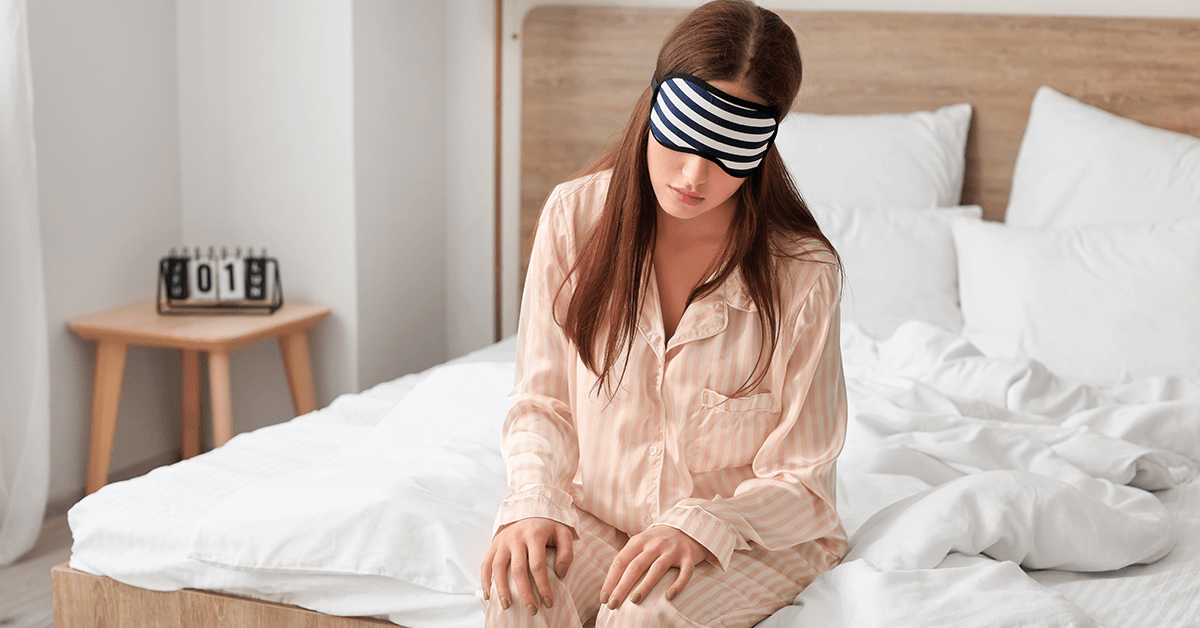
Medically reviewed by
Dacelin St Martin, MD
Triple board-certified in Sleep Medicine,
Internal Medicine, and Pediatrics.
What Causes Sleepwalking? | Symptoms | Treatments | Sleepwalking and Children | Your Doctor’s Visit
Introduction
Sleepwalking is a sleep disorder where a person becomes mobile while in a state of sleep. Although their eyes are open, they are not seeing their immediate surroundings; rather what they’re seeing is the location where their mind has placed them.
Medically known as somnambulism, sleepwalking is characterized by a series of confusional arousals or the arousal of parasomnia that results in a person walking while sleeping.[1]
Sleepwalking is more prevalent in 2-14 percent of children, ages 4-8, than in adults, and generally outgrow the disorder by adolescence. Recurrent symptoms require the attention of a doctor.
People who sleepwalk typically do not remember the incident when they wake up. Gently waking the person is recommended to prevent them from being startled.
What Causes Sleepwalking?
There are a lot of factors that lead to sleepwalking. Consequently, you may sleepwalk if you are:
- Sleep-deprived
- Stressed or fatigued
- Drunk
- Taking drugs or strong medication, such as sedative-hypnotics, neuroleptics, and stimulants
Chronic sleepwalking can be linked to pre-existing medical conditions such as:
- Heart rhythm problems
- Fever
- Sleep apnea
- Restless legs syndrome
Persistent sleepwalking symptoms may be connected to more severe conditions, such as post-traumatic stress disorders (PTSD).
Persons who are sexually or physically abused are at a higher risk of experiencing sleep terrors and sleepwalking.[2]
Symptoms
Sleepwalkers typically get out of bed and walk around, sleeping and unaware of what is happening in their immediate surroundings. Sleepwalkers may also experience the following characteristics:
- Glassy-eyed expression
- Unresponsive to attempted communication
- Difficult to wake up during an episode
- Confusion after being awakened
- Lack of memory of the incident
Medical intervention is necessary if you or a family member experiences the following sleepwalking symptoms:
- Recurrence of sleepwalking episodes as few as once or twice a week, up to several times at night
- Dangerous behavior or injury while sleepwalking
- A significant disruption in sleep
- Daytime sleepiness
- Symptoms start in adulthood
Treatments
Medications and other medical treatments for sleepwalking are unnecessary unless connected to another health issue or the symptoms are severe.
A person without any underlying illness may undergo a series of brief hypnotherapy sessions. Although little is known regarding this type of treatment for sleepwalking, one controlled-study reveals it can be an effective option for those who sleepwalk.[3]
Other treatment and medication may include the administration of antidepressants and sedatives as well as the following:
- Treatment of Underlying Condition – If an underlying condition causes the sleepwalking episode
- Adjustment of Medication – If found that the symptoms are due to strong medications
- Anticipatory Awakening – Waking the person 10-15 minutes before he or she sleepwalks
- Counseling – If sleepwalking is due to PTSD or other mental conditions
Sleepwalking & Children
The following are lifestyle and home remedies that you can use to manage the sleepwalking symptoms of a child.
1. Make the Environment at Home Safe
Try to determine what time your child usually sleepwalks. Remove barriers that may cause injury to your child during an episode. Close the windows, lock the door, and keep sharp objects away. If possible, do not let your child sleep alone.
2. Gently Lead the Sleepwalker to Bed
In isolated cases, there is no need to wake your child when they sleepwalk as they may feel disrupted and confused. You can gently guide them back to bed for them to continue sleeping.
3. Establish a Regular Sleep Schedule
Do quiet and calming activities for your child before putting them to sleep. Practice meditation and relaxation exercises and make their bedroom comfortable.
4. Communicate with your Child
Sometimes, it is hard to pinpoint sleeping issues with kids because they can be secretive. When diagnosing a sleep disorder, doctors will ask about your child’s sleeping routine. Your role as a parent is to manage their bedtime routine and ensure you communicate with your child. Encourage them to open up with their feelings and emotions. Reassure your child that you will be there to help them.
5. Look for a Pattern
Observe your child for several nights. Take note of when your child sleepwalks and the duration, and plan for anticipatory awakenings.[4] In any case, you should limit your child’s exposure to violent and scary movies. Take note of your kid’s activities and make sure they are safe from physical, mental, and sexual abuse.
Your Doctor’s Visit
If symptoms persist, schedule an appointment with your doctor and get a precise diagnosis of what is going on. Before your appointment, make a list of the following information:
- Any symptoms that your child experiences, even those that may seem unrelated
- Critical personal information, such as significant stresses, triggers, and recent life changes that may have caused trauma or phobia to your child
- The day, time, and age when the symptoms started
- Past and present medications, including vitamins, herbs, and other supplements
Of course, do not forget to list various questions to ask your doctor as it will help you get the most out of your visit.
References:
- Guilleminault, C. et. al. (2005). Adult chronic sleepwalking and its treatment based on polysomnography. Brain: a journal of neurology. 128(5):1062-1069. https://doi.org/10.1093/brain/awh481
- Stallman H.M., and Kohler, M. (2016). Prevalence of sleepwalking: a systematic review and meta-analysis. Plos One. https://doi.org/10.1371/journal.pone.0164769
- Reid, W.H., Ahmed I., and Levie, C.A. (2018). Treatment of sleepwalking: a controlled study. The American Journal of Psychotherapy. 35(1):p27. https://doi.org/10.1176/appi.psychotherapy.1981.35.1.27
- Frank, N.C., Spirito, A., Stark, L., Owens-Stively, J., (1997). The use of scheduled awakenings to eliminate childhood sleepwalking. Journal of Pediatric Psychology. 22(3):345-353. https://doi.org/10.1093/jpepsy/22.3.345


